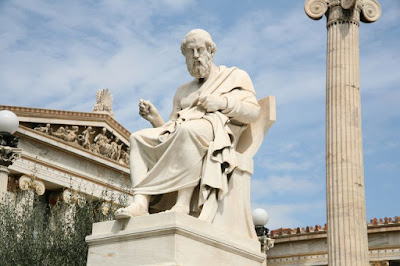NOTES ON HATA YOGA [HATHA YOGA]
THE Sushumna is connected with the tube that runs through the
centre of the spine. It is a sort of vein of magnetic electricity, and the
energy passing through the Sushumna is a stream of vitalelectricity. The
tube above-mentioned is connected with the ventricles of the brain.
The Sushumna begins with the Muladharam
and ends in Sahasraram. The former Chakram is at the base of the
spine where it forms a triangle.
The Brahmarandhra is put in different
places in different books, it should be taken to be the top of the head.
You may know the action of Sushumna by
feeling an accession of fire to the brain — as if a hot current of air were
being blown through the tube from the bottom to the top.
Hata Yogis say that Ida
and Pingala act alternately, but if you stop both of these the hot
current is forced through the Sushumna. Also without having anything to
do with Ida and Pingala — by practising Kumbaka alone —
the Sushumna comes into play; but a Raj Yogi, without using
either of these methods, has a way of rousing the Kundalini. The means
the Raj Yogi employs belongs to the mysteries of initiation.
The reason why Sushumna is reckoned to
be the chief of the Nadis is, because it is only through it that the Monad
goes out in the case of a Yogi; and in the case of an adept, at the time
of his death, his soul goes out through the Sushumna. Moreover it is the
seat of circulation of the soul or Karana-sarira.
The Karana-sarira is said to be in a
state of sleep, but this is no ordinary sleep, it is Yoga sleep. It is
the calm after the tempest spoken of in "Light on the Path" (Rule
21).
Samadhi includes the
realization of Yoga Anandam, but it is a generic term used to denote
several conditions.
It is absurd to suppose, as stated in some of
the books, that the solar system is contained in the Sushumna. What is
meant is that when consciousness is fixed for the time being in the Monad
circulating in the Sushumna, the Yogi becomes en rapport
with the astral light and the universal mind and thus is able to see the whole
cosmos.
The six Chakrams
are located in the Sthula-sarira, but they are not visible
when a body is dissected, because the leaves and petals described in the
books have no objective existence, but represent so many powers or
energies.
For instance, Sahasraram is considered to have eight main petals,
and the meaning of this is that the brain has eight poles. Similarly the
letters, characters, symbols, goddesses, etc, said in the books to exist
in these Chakrams, all
symbolize different power.
The reason of the differences between the Chakrams is that in the seven
centres seven powers are located, and it is said that as the Kundalini breaks through each Chakram it causes the man to
subdue that Chakram.
As Kundalini
goes on breaking through the Chakrams
one by one, it gains control over so many forces connected with the
elements, the astral counterparts of which are located in the respective Chakrams. The location of the mind is
said to be between the eyebrows by the Hata
Yogis.
The Chakra
Sammalanam mentioned in the
books means that when Kundalini passes through one Chakram, it takes Its essence or
energy, and so on with the rest, and finally joins all into a sort of
united current.
The seven Chakrams
are connected with the seven planets in the following order, beginning
with Muladharam :
Saturn, Jupiter, Mars, Venus, Mercury, Moon, Sun. The moon is
connected with the mind of man, because it is so changeable
and vacillating.
The mind of man never penetrates (as sometimes
asserted) into the Chakrams
but the Kundalini does so
penetrate, and the mind itself will finally combine with Kundalini when the latter gets near the
Agna Chakram, and then the man
becomes clairvoyant.
Kundalini is a power or
energy in the Muladharam
sometimes called the astral serpent. It has its head in the region of
the navel; it can be roused by increasing the fire in the Muladharam. It is said to be like a
serpent, because it moves in carves, it appears to move round and round in
a circle, Ida and Pingala alternate on account of its motion.
Kundalini is said in the
books to have three and a half circles to show that it pervades the three
and half matras of Pranava.
In some cases it is represented as light, because its energy runs through Ashtaprakriti. Sometimes it is
represented as four.
Some say that, in order to attain Raja Yoga,
one should investigate Mahavakyam
; others that the mind must be concentrated on a point and the Yogi must contemplate Parabrahm; some say one's own Guru is
the true subject of contemplation, and it is enough to lead a good life;
some say the repetition of the Pranava
is in itself Raj Yog,
and others say you must cultivate will-power : which of these ways is
the true one ? All these are necessary and much more—read "Light
on the Path." The end of Raj
Yog is the attainment of immortality.
[Notes of a conversation with the Solar Sphinx]
(T. Subba Row – Notes on Hatha Yoga -
Theosophist 1886 v8 December p.138-139 / A Collection of Esoteric Writings
(1910), pp. 253-55)














